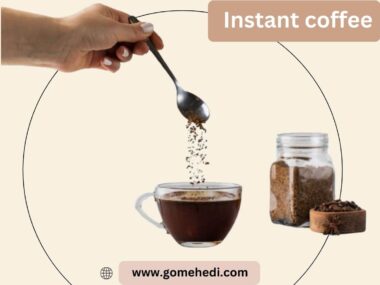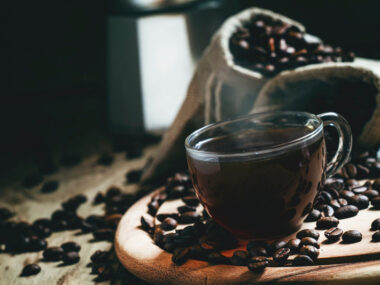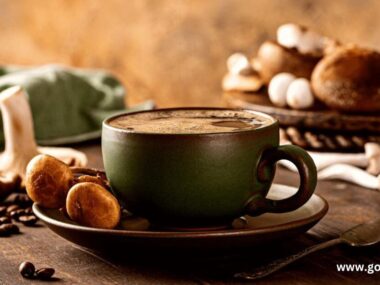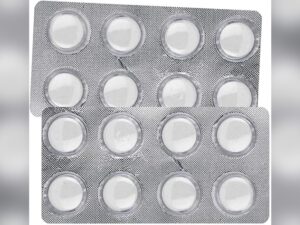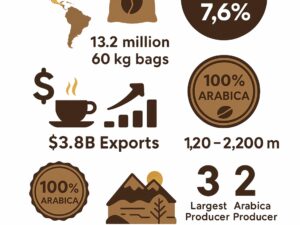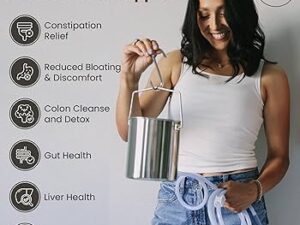Making a pot of coffee is simple and rewarding. Learn how to make a pot of coffee using fresh beans and clean tools for a rich, flavorful experience.
Coffee is a beloved morning ritual for many. It wakes us up and prepares us for the day ahead. But making a great pot of coffee is an art. With just a few steps, you can enjoy a rich, flavorful brew each time.
Whether you’re a coffee newbie or a seasoned drinker, this guide will help you brew the perfect pot. You’ll learn about the right coffee-to-water ratio, the best grind size, and the importance of water temperature. Let’s dive in and make your mornings even better with a perfect pot of coffee.
Choosing Your Coffee Beans
Making a pot of coffee is an art. The most crucial step is choosing your coffee beans. The right beans can make or break your brew. Let’s explore how to select the best coffee beans for a perfect pot of coffee.
Types Of Coffee Beans
Understanding the different types of coffee beans is essential. Each type has its own unique flavor profile. The main types are Arabica and Robusta.
Here are some key points about each:
-
Arabica: Known for its smooth, complex flavors. Often has fruity or floral notes.
-
Robusta: Stronger and more bitter. Contains more caffeine. Often used in espresso blends.
There are also other less common types:
-
Liberica: Unique and rare. It has a woody, smoky flavor.
-
Excelsa: Often found in blends. Adds a tart, fruity taste.
Let’s compare these types in a table:
|
Type |
Flavor |
Caffeine Content |
|---|---|---|
|
Arabica |
Smooth, complex, fruity |
Lower |
|
Robusta |
Strong, bitter |
Higher |
|
Liberica |
Woody, smoky |
Medium |
|
Excelsa |
Tart, fruity |
Medium |
Choosing the right type depends on your taste preference. If you like a smooth and mild coffee, go for Arabica. If you need a strong kick, Robusta might be your choice.
Freshness Matters
Freshness is key to a great cup of coffee. Coffee beans start to lose their flavor soon after roasting. Always look for the roast date on the packaging.
Here are some tips for ensuring freshness:
-
Buy whole beans: Ground coffee loses freshness faster.
-
Store properly: Keep beans in an airtight container. Store in a cool, dark place.
-
Use quickly: Try to use beans within a month of roasting.
Let’s summarize the effects of freshness:
|
Freshness |
Flavor |
Quality |
|---|---|---|
|
Freshly Roasted |
Rich, vibrant |
High |
|
1 Month Old |
Decent, less vibrant |
Medium |
|
3 Months Old |
Dull, stale |
Low |
Remember, the fresher the beans, the better the coffee. Always check the roast date and buy in small amounts to keep your coffee fresh. Your taste buds will thank you.

Credit: www.wikihow.com
Essential Brewing Equipment
Brewing a perfect pot of coffee starts with having the right equipment. The tools you use can greatly affect the taste and quality of your coffee. Understanding the essential brewing equipment helps you make better coffee every time. Below, we will discuss some of the must-have items for any coffee lover’s kitchen.
Coffee Makers
The coffee maker is the heart of your brewing setup. It determines how the water interacts with the coffee grounds. Here are some popular types of coffee makers:
-
Drip Coffee Makers: These are easy to use and perfect for making large quantities. Simply add water and coffee grounds, and let the machine do the work.
-
French Press: This manual coffee maker allows you to control the brewing time. It produces a rich and full-bodied coffee.
-
Single-Serve Machines: These are convenient for making one cup at a time. They use coffee pods or capsules.
-
Espresso Machines: Ideal for those who love strong coffee. They can also make lattes and cappuccinos.
Choosing the right coffee maker depends on your preference and lifestyle. If you enjoy a quick cup in the morning, a drip coffee maker might be best. If you like to savor your coffee, a French press could be ideal. Here’s a simple comparison table to help you decide:
|
Type |
Pros |
Cons |
|---|---|---|
|
Drip Coffee Maker |
Easy to use, makes large quantities |
Less control over brewing |
|
French Press |
Rich flavor, manual control |
More time-consuming |
|
Single-Serve |
Convenient, quick |
More expensive per cup |
|
Espresso Machine |
Makes strong coffee, versatile |
Expensive, requires skill |
Grinders And Accessories
Grinding your coffee beans just before brewing ensures the freshest flavor. The right grinder can make a big difference. There are two main types:
-
Blade Grinders: These are affordable and simple to use. However, they produce uneven grounds.
-
Burr Grinders: These provide a consistent grind size. They are more expensive but worth the investment.
Burr grinders come in two types: flat burr and conical burr. Conical burr grinders are quieter and less messy. Flat burr grinders are faster but can be noisier. Here’s a quick comparison:
|
Type |
Pros |
Cons |
|---|---|---|
|
Blade Grinder |
Inexpensive, easy to use |
Uneven grind, less control |
|
Burr Grinder |
Consistent grind, better flavor |
More expensive, larger size |
In addition to grinders, having the right accessories is essential. Here are some must-have items:
-
Measuring Spoon: Ensures the right amount of coffee.
-
Kettle: A gooseneck kettle is ideal for precise pouring.
-
Scale: Helps measure coffee and water accurately.
-
Thermometer: Ensures water is at the perfect brewing temperature.
These tools help you achieve the best flavor and consistency. The right grinder and accessories make your coffee experience more enjoyable.
Measuring Coffee And Water
Making a pot of coffee is an art that many coffee lovers appreciate. One crucial step in this process is measuring the coffee and water correctly. Getting the right balance ensures a delicious brew every time. Let’s dive into the details of how to measure coffee and water for a perfect pot of coffee.
Coffee-to-water Ratio
Getting the coffee-to-water ratio right is vital for a good cup of coffee. The standard ratio is 1:15 to 1:18. This means one gram of coffee for every 15 to 18 grams of water. Adjusting this ratio will change the strength and flavor of your coffee.
Here’s a simple table to guide you:
|
Coffee (grams) |
Water (grams) |
|---|---|
|
10 |
150 |
|
20 |
300 |
|
30 |
450 |
|
40 |
600 |
-
For a stronger coffee, use a 1:15 ratio.
-
For a milder coffee, opt for a 1:18 ratio.
Experiment with these ratios to find the one that suits your taste. Remember, the quality of coffee beans and water can also affect the final taste. Always use fresh, filtered water and high-quality beans for the best results.
Using A Scale
Using a scale ensures precision in measuring coffee and water. A scale helps maintain consistency, especially if you are trying to replicate a specific taste.
-
Place your coffee maker or filter on the scale.
-
Zero the scale (tare function) to exclude the weight of the container.
-
Measure the required amount of coffee based on your preferred ratio.
-
Zero the scale again if needed.
-
Add the necessary amount of water.
-
Accuracy: Ensures the correct coffee-to-water ratio.
-
Consistency: Helps achieve the same taste every time.
-
Efficiency: Reduces wastage by measuring exact amounts.
A kitchen scale can be a small investment but makes a big difference in your brewing process. It’s easy to use and can significantly improve your coffee-making skills.

Credit: www.youtube.com
Grinding Coffee Beans
Making a perfect pot of coffee starts with the quality of your coffee beans and how you grind them. Grinding coffee beans correctly can make a significant difference in the taste and texture of your coffee. Let’s delve into the essential aspects of grinding coffee beans to help you brew the best cup of coffee.
Grind Sizes Explained
Understanding grind sizes is crucial for brewing the perfect coffee. The grind size affects the flavor, aroma, and strength of your coffee. Here’s a breakdown of the different grind sizes and their ideal uses:
|
Grind Size |
Description |
Best For |
|---|---|---|
|
Coarse |
Large, chunky pieces, similar to sea salt. |
French Press, Cold Brew |
|
Medium-Coarse |
Similar to coarse sand. |
Chemex, Drip Coffee Makers |
|
Medium |
Texture of regular sand. |
Drip Coffee Makers, Aeropress (with a long brew time) |
|
Medium-Fine |
Smoother than sand, but not powdery. |
Pourover, Aeropress (with a short brew time) |
|
Fine |
Feels like table salt. |
Espresso Machines, Moka Pot |
|
Extra Fine |
Almost powdery, like flour. |
Turkish Coffee |
Choosing the right grind size ensures proper extraction and balanced flavors. Using the incorrect grind size can result in over-extraction or under-extraction, leading to bitter or weak coffee.
Best Practices For Grinding
To achieve the best flavor from your coffee, follow these best practices for grinding:
-
Use a Burr Grinder: Burr grinders provide a more consistent grind size compared to blade grinders. Consistency is key to uniform extraction and taste.
-
Grind Fresh: Grind your coffee beans just before brewing. Freshly ground coffee preserves the essential oils and aromas, enhancing the overall flavor.
-
Measure Coffee: Use a scale to measure your coffee beans. The ideal ratio is 1:15-1:18 coffee to water. This ensures a balanced and flavorful cup.
-
Adjust Grind Size: Adjust the grind size based on your brewing method. Refer to the table above to find the suitable grind size for your equipment.
-
Clean Your Grinder: Regularly clean your grinder to prevent old coffee grounds from mixing with fresh ones. This helps maintain the purity of flavor.
By following these practices, you can enjoy a consistently delicious pot of coffee every time you brew. Remember, the quality of your grind can make or break your coffee experience.
Brewing Methods
Making a pot of coffee is an essential ritual for many. The brewing method you choose can greatly affect the taste and experience of your coffee. Whether you prefer a classic drip coffee maker or the robust flavor of a French press, understanding these methods will help you make the perfect cup every time. Let’s explore two popular brewing methods: Drip Coffee Makers and the French Press Technique.
Drip Coffee Makers
Drip coffee makers are a common household appliance. They are easy to use and produce consistent results. Here are the steps to make coffee using a drip coffee maker:
-
Measure the coffee grounds: Use one to two tablespoons of coffee per six ounces of water. Adjust to taste.
-
Fill the water reservoir: Pour water into the machine’s reservoir. Use filtered water for the best taste.
-
Place the coffee filter: Insert a paper or reusable filter into the basket.
-
Add coffee grounds: Place the measured coffee grounds into the filter.
-
Brew the coffee: Turn on the machine and wait for the brewing process to complete.
-
Serve and enjoy: Pour the coffee into a mug and enjoy your freshly brewed drink.
Drip coffee makers offer convenience and ease. They are perfect for those who need a quick cup of coffee in the morning. The machine does all the work, making it a hassle-free option.
French Press Technique
The French press method is known for its rich and full-bodied flavor. It requires a bit more effort than a drip coffee maker but is worth it for many coffee enthusiasts. Here are the steps to make coffee using a French press:
-
Heat the water: Bring water to a boil and let it cool for about 30 seconds.
-
Measure coffee grounds: Use coarse-ground coffee. The ratio is usually one tablespoon of coffee per four ounces of water.
-
Add coffee grounds: Place the coffee grounds into the French press.
-
Pour water: Pour hot water over the coffee grounds. Stir gently to mix.
-
Let it steep: Place the lid on the French press and let the coffee steep for four minutes.
-
Press the plunger: Slowly press the plunger down to separate the grounds from the coffee.
-
Serve and enjoy: Pour the coffee into a mug and enjoy.
The French press technique allows for greater control over the brewing process. It captures the essential oils of the coffee, providing a richer flavor. This method is ideal for those who appreciate a more hands-on approach to making coffee.
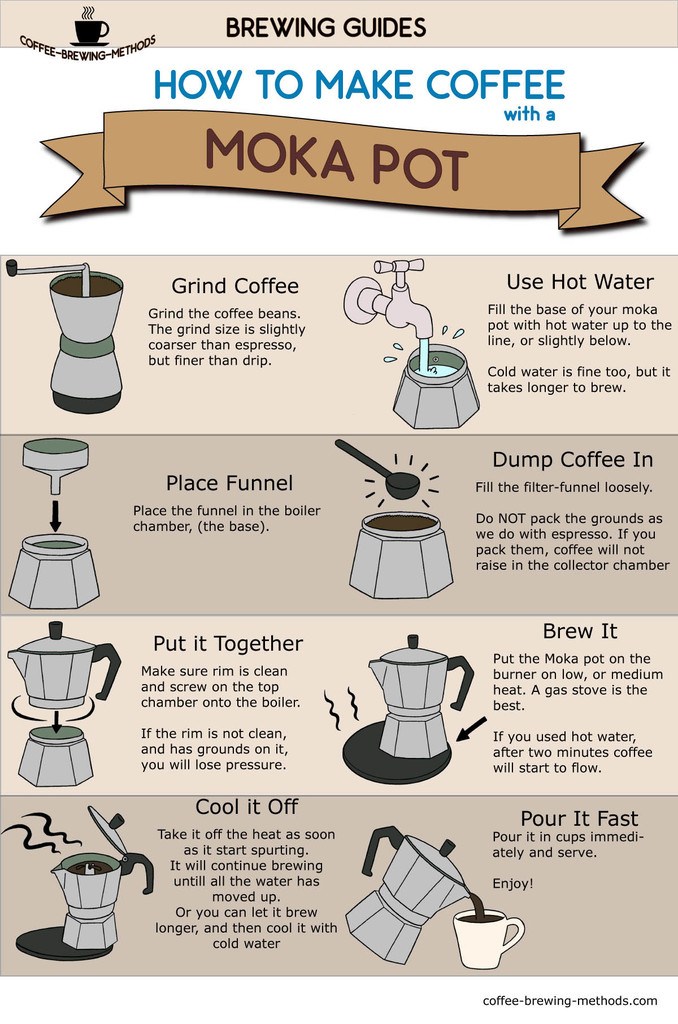
Credit: coffee-infographics.com
Water Quality And Temperature
Making a pot of coffee involves more than just using good coffee beans. The quality of water and its temperature are crucial factors that can affect the taste and aroma of your coffee. Using the right type of water and maintaining the ideal brewing temperature can make a significant difference in your coffee experience.
Best Water Types
Water quality plays a vital role in brewing coffee. Using the wrong type of water can lead to a flat or bitter taste. Here are some guidelines for choosing the best water for your coffee:
-
Filtered Water: This is often the best choice. It removes impurities and chlorine, which can negatively affect the taste.
-
Bottled Spring Water: This water type is usually free from additives and has a balanced mineral content that enhances the coffee’s flavor.
-
Distilled Water: Avoid using this type of water. It lacks minerals, which can result in a flat taste.
-
Tap Water: If using tap water, make sure it is free from strong odors and tastes. You might need a good water filter.
To make it easier to understand, here’s a table summarizing the best water types for coffee:
|
Water Type |
Suitability for Coffee |
|---|---|
|
Filtered Water |
Excellent |
|
Bottled Spring Water |
Good |
|
Distilled Water |
Poor |
|
Tap Water |
Varies (use a filter if needed) |
Ideal Brewing Temperature
The temperature of the water used for brewing coffee is just as important as the water quality. The ideal brewing temperature can help extract the perfect flavor from the coffee grounds.
The ideal brewing temperature ranges between 195°F and 205°F (90°C – 96°C). This range ensures the coffee grounds are properly saturated and the flavors are fully extracted.
Using water that is too hot or too cold can lead to various issues:
-
Too Hot (above 205°F): This can over-extract the coffee, leading to a bitter taste.
-
Too Cold (below 195°F): This can under-extract the coffee, resulting in a weak and sour taste.
Here are some tips for maintaining the right temperature:
-
Use a thermometer to monitor the water temperature.
-
If you don’t have a thermometer, let the water sit for 30 seconds after boiling before pouring it over the coffee grounds.
-
Consider using a coffee maker with a temperature control feature.
By paying attention to water quality and temperature, you can enhance the flavor and aroma of your coffee, making each pot a delightful experience.
Adding Flavor And Enhancements
Making a pot of coffee is a daily ritual for many. While a plain cup of coffee is delightful, adding flavors and enhancements can take your coffee experience to the next level. With a few simple ingredients, you can customize your coffee to suit your taste preferences. Let’s explore how you can enhance your coffee with milk, cream, spices, and syrups.
Milk And Cream Options
Adding milk or cream to your coffee can create a rich and smooth texture. Different types of milk and cream offer unique flavors and health benefits. Here are some popular options:
-
Whole Milk: Adds a creamy and rich taste. It balances the coffee’s bitterness.
-
Skim Milk: A low-fat option that adds a light texture without the extra calories.
-
Almond Milk: A dairy-free alternative with a nutty flavor. It’s perfect for those who are lactose intolerant.
-
Soy Milk: Another dairy-free option, soy milk has a slightly sweet taste and is high in protein.
-
Oat Milk: A popular choice for its creamy texture and mild taste. It also froths well for lattes.
-
Heavy Cream: For a decadent and rich coffee, add heavy cream. It’s thick and luxurious.
-
Half-and-Half: A mix of milk and cream, providing a balanced creaminess.
Here’s a quick comparison of some milk and cream options:
|
Type |
Flavor Profile |
Calories per 100ml |
|---|---|---|
|
Whole Milk |
Creamy, Rich |
60 |
|
Skim Milk |
Light, Less Creamy |
35 |
|
Almond Milk |
Nutty |
13 |
|
Soy Milk |
Slightly Sweet |
45 |
|
Oat Milk |
Mild, Creamy |
40 |
|
Heavy Cream |
Thick, Luxurious |
340 |
|
Half-and-Half |
Balanced Creaminess |
120 |
Spices And Syrups
Spices and syrups add a burst of flavor to your coffee. They can transform a simple cup into a gourmet treat. Here are some popular options:
-
Cinnamon: Adds warmth and a sweet-spicy kick. Sprinkle it on top or stir it in.
-
Nutmeg: A pinch of nutmeg gives a slightly sweet and nutty flavor.
-
Cardamom: Offers a unique, aromatic taste. It pairs well with strong coffee.
-
Vanilla Syrup: Adds a sweet and creamy flavor. It’s a classic choice for flavored coffee.
-
Caramel Syrup: For those who love a sweet and buttery taste, caramel syrup is perfect.
-
Hazelnut Syrup: Adds a nutty and sweet flavor. It’s a popular choice in many coffee shops.
-
Chocolate Syrup: For a mocha-like taste, add some chocolate syrup. It’s deliciously rich.
Here’s a simple guide on how to use spices and syrups:
-
Add Spices: Sprinkle your chosen spice directly into your coffee or on top of whipped cream.
-
Add Syrups: Mix your chosen syrup into the coffee while it’s hot to ensure it blends well.
-
Adjust to Taste: Start with a small amount and add more if needed. Everyone’s taste is different.
Experimenting with different spices and syrups can make your coffee exciting and personalized. Try different combinations to find your perfect cup.
Storing Coffee Properly
Making a perfect pot of coffee begins with the right beans and the correct brewing method. But, how you store your coffee beans can significantly impact the taste and aroma of your coffee. Proper storage ensures your beans stay fresh and flavorful. Let’s explore the best ways to store coffee.
Best Storage Containers
Choosing the right storage container is crucial. The container should keep the coffee beans fresh and protect them from air, light, and moisture. Here are some excellent options for storing your coffee beans:
-
Airtight Containers: These prevent air from getting in, which can make the beans stale. Look for containers with a tight seal.
-
Opaque Containers: Exposure to light can degrade coffee beans. Use containers that block light to maintain freshness.
-
Vacuum-Sealed Containers: These containers remove air before sealing, giving your beans a longer shelf life.
-
Glass Jars with Rubber Gaskets: These jars are not only airtight but also stylish. Make sure they are stored in a dark place to avoid light exposure.
A comparison of storage options can help you decide:
|
Container Type |
Protection from Air |
Protection from Light |
Cost |
|---|---|---|---|
|
Airtight Containers |
Excellent |
Good |
Moderate |
|
Opaque Containers |
Good |
Excellent |
Moderate |
|
Vacuum-Sealed Containers |
Excellent |
Good |
High |
|
Glass Jars with Rubber Gaskets |
Good |
Fair |
Low |
Avoiding Staleness
Keeping your coffee beans fresh is essential for a good cup of coffee. Staleness can ruin the flavor. Follow these tips to avoid staleness:
-
Store in a Cool, Dry Place: Heat and moisture are enemies of fresh coffee. Keep your beans in a cool, dry environment.
-
Avoid Refrigeration: The refrigerator may seem like a good idea, but it can introduce moisture and odors to your beans.
-
Buy in Small Batches: Purchasing small amounts of coffee ensures you use the beans before they go stale.
-
Grind Just Before Brewing: Ground coffee loses freshness faster than whole beans. Grind only what you need for each pot.
To summarize, using the right storage containers and following proper storage practices will keep your coffee fresh and flavorful. Enjoy every cup to the fullest!
Frequently Asked Questions
How Much Coffee For One Pot?
Use 1 to 2 tablespoons of coffee grounds per 6-ounce cup of water. Adjust to taste.
What Is The Best Coffee Grind Size?
A medium grind works best for drip coffee makers. It provides a balanced flavor and aroma.
How Long Should Coffee Brew?
Brew coffee for about 4 to 5 minutes. This ensures optimal extraction without bitterness.
Can I Use Tap Water For Coffee?
Yes, you can use tap water. However, filtered water is recommended for the best taste.
Conclusion
Brewing a perfect pot of coffee is easy with these steps. Select good beans. Measure the right amount. Use fresh water. Follow the proper brewing time. Enjoy the rich aroma and flavor. With practice, your coffee skills will improve. Share a cup with friends and family.
Savor every sip together. Making coffee can be a delightful daily ritual. Stay patient and keep experimenting. Soon, you’ll brew coffee like a pro. Happy brewing!


